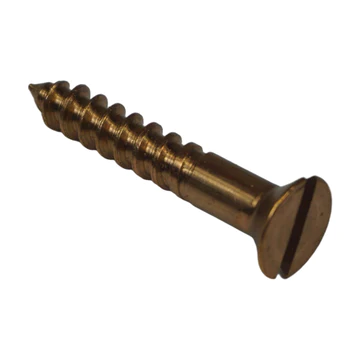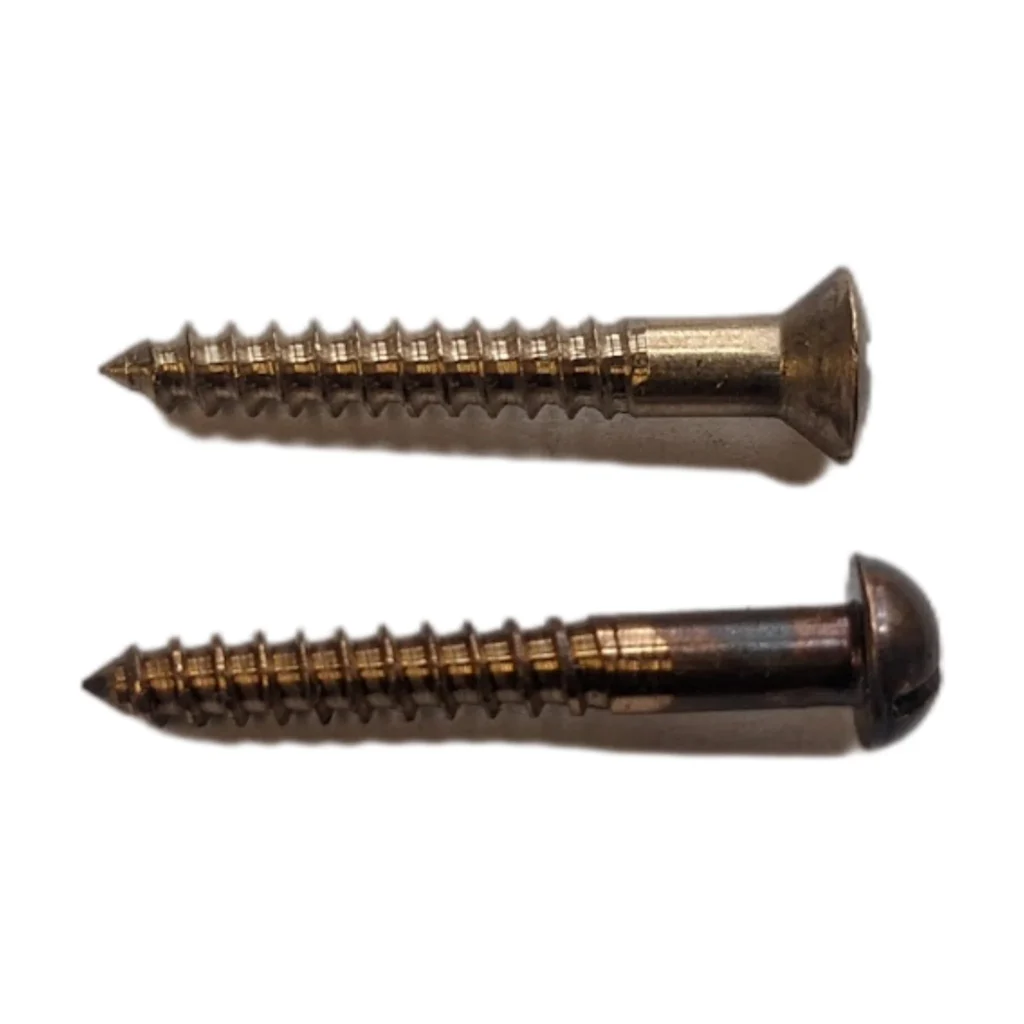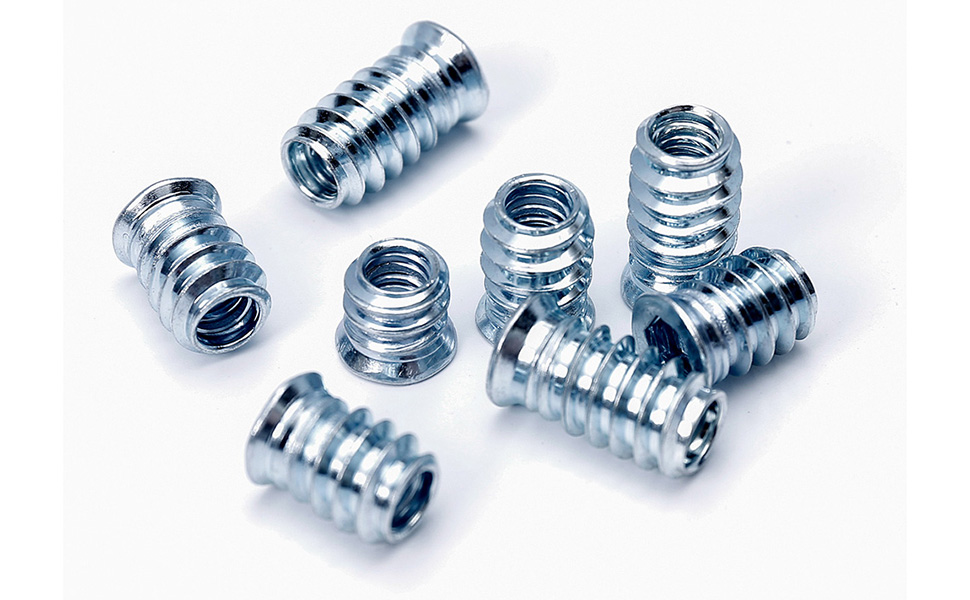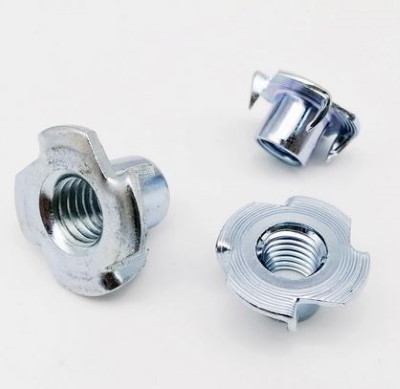You’re here because you have a pretty nice old antique lock, but successive visits by helpful tradesmen or well-meaning husbands clearing a docket of tasks as beer thirty approaches have filled the holes on your lock’s trim with a motley selection of steel screws, lag bolts, nails, etc. These look like so many small and glinting black eyes against the clean Art Deco lines of your period lock and door. You need to find appropriate screws, whether because the building is on the national historic register/legal obligation or just the sake of your sanity.But where will you find these screws which aren’t sold at Home Depot? Read on, my friend, I have numerous sources for you to order them from and guidance on what to get.
Placeholder for a picture of a mortise lock thumblatch with inappropriate fasteners to come in the future

In my opinion one should use the longest screw possible to utilize fresh wood. After 100 years the wood tends to get stripped out of a screw hole. Every time somebody reattaches something to the door with those woodscrews they are going to try to tighten that screw and over time that will tear the fibers of the wood out until there’s nothing left in the hole and the screw will fall out when you shut the door with any force. The situation is even worse now that everybody has impact drivers.

You can figure out the maximum length of screw for your door by taking a very small diameter drill bit and drilling the center of the hole through all of the wood but not through the other side of the door. Stop when you hit the metal of the lock which will be obvious. Now stick a needle or paperclip in the hole to find out how deep it will go. That is the max length of the screw in the wood you can use. You can add the depth of the hardware mounted with the screw on the door’s surface. So for example, if your hole is 3/4″ and the rose or eschutcheon is 1/8″, you would use a 7/8″ screw although a 3/4″ would be a better choice, it’s horrible to bottom out before the thing you’re screwing in is snug on the door. If you only need four screws get both, they’re only $0.50 each or so.
Try to find aged bronze or antique brass or oil rubbed bronze finish to match your old lock’s patina. Bright brass will look weird and then will rust and look weirder.
Here are some links to places to buy these screws…
Fair Winds Fasteners: Make specialty screws for boats. They take their screws very seriously!
House of Antique Hardware: Maybe the best selection of faux antique hardware of reasonable quality. They have a great selection of replacement screws in many different styles and finishes! This is probably the easiest way to deal with your missing screw issues. These screws are solid brass so correct for the period.
Tacoma Screw: My favorite source for fasteners in the world is Tacoma Screw, who have every kind of strange fastener available often in store. They have a helpful staff and a dog friendly store policy. It appears that they don’t have oil rubbed bronze slotted screws but they can order anything you want and know how to find it. They got me countersunk head pop rivets which is the only fastener aside from slotted oil rubbed bronze finish screws I’ve found they don’t have in stock.
Back to the issue of screws falling out of the door. The diameter of the hole in your door hardware limits the diameter of the screw and the depth of the hole is also a limitation. If there is no wood left behind the hole you can either rotate the rose to a new position and drill new pilot holes or you can fix the hole with something. Please don’t widen the hole in your door hardware. Please don’t use superglue on the screw. Please don’t drill a pilot hole into the mortise cassette. Only pain lies ahead if you go this route.
There are many ways to fix the existing hole. You can drill the hole larger and glue a piece of wood into the hole and screw into that, you can use Woodmate’s Mr. Grip to add material to the hole (be careful, the sharp perforated metal will cut your fingers easily), you can jam a lot of toothpicks into the hole or you can fill with plastic wood and redrill the holes. Another cool option is threaded inserts for wood but these will require getting machine screws of the proper finish and is a whole new can of worms. You would have to order countersunk slotted machine screws in the appropriate finish, threadpitch matching the insert, length and diameter. I have had really good results with threaded inserts for wood. For even better holding power look for tee nuts. They are threaded inserts with additional teeth to prevent unwanted rotation after install. For more information about the difference between the two look here.


